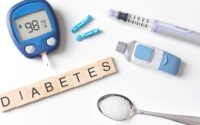Physical Activity Rivals Medications in Preventing Death
Exercise Emerges as Powerful Ally in Combating Heart Disease and Stroke
A significant new study published in the British Medical Journal (BMJ) challenges traditional treatment approaches for heart disease and stroke. Researchers analyzed hundreds of clinical trials involving nearly 340,000 patients to compare the effectiveness of exercise and medication in preventing death. The findings revealed a surprising truth: exercise proved to be just as effective as some heart medications and even surpassed medications used for stroke patients.
These results highlight the immense potential of exercise as a therapeutic tool. The study underscores the importance of integrating physical activity into treatment plans, alongside medications, for a more holistic approach to managing cardiovascular health.
However, the research also emphasizes the crucial role medications continue to play. Experts caution against abandoning prescribed drugs in favor of exercise alone. The ideal scenario appears to be a combined approach, leveraging the benefits of both exercise and medication to maximize patient outcomes.
The study sheds light on a concerning trend: insufficient physical activity among adults. Despite the established health benefits, only a third of the population in England, for example, meets the recommended weekly exercise guidelines of 2.5 hours of moderate-intensity activity, such as brisk walking or cycling. This statistic stands in stark contrast to the ever-rising rates of prescription drug use.
The research team, comprised of scientists from the London School of Economics, Harvard Pilgrim Health Care Institute, and Stanford University School of Medicine, conducted a comprehensive review of medical literature. Their focus was on identifying studies that directly compared the effectiveness of exercise and medications in various conditions. The analysis encompassed over 300 trials, examining conditions such as existing heart disease, stroke rehabilitation, heart failure, and pre-diabetes.
The overall analysis revealed a close match between exercise and medication in terms of reducing mortality rates. However, two key exceptions emerged. For patients with heart failure, diuretic medications proved to be the most effective treatment. Conversely, exercise demonstrated clear superiority over medications in improving life expectancy for stroke patients.
While acknowledging the numerous health advantages of an active lifestyle, Amy Thompson, a senior cardiac nurse at the British Heart Foundation, emphasizes the need for further research to definitively establish the superiority of exercise over medication in certain situations.
“Medicines are an essential component of treatment for many heart conditions,” Thompson states. “Patients on prescribed medications should absolutely continue taking them. If you have a heart condition or are considered high-risk for heart disease, discuss the role of exercise in your treatment plan with your doctor.”
Dr. Peter Coleman of the Stroke Association emphasizes the critical role of exercise alongside medication, advocating for additional research.
“We strongly encourage further investigation into the long-term benefits of exercise for stroke patients,” says Dr. Coleman. “By taking proactive steps like regular exercise, maintaining a balanced diet, and quitting smoking, individuals can significantly reduce their stroke risk. Moderate physical activity alone can decrease stroke risk by up to 27%.”
This groundbreaking research paves the way for a more comprehensive approach to managing heart disease and stroke. By integrating the power of exercise alongside traditional medication approaches, we can offer patients a more robust and potentially life-saving treatment strategy.



